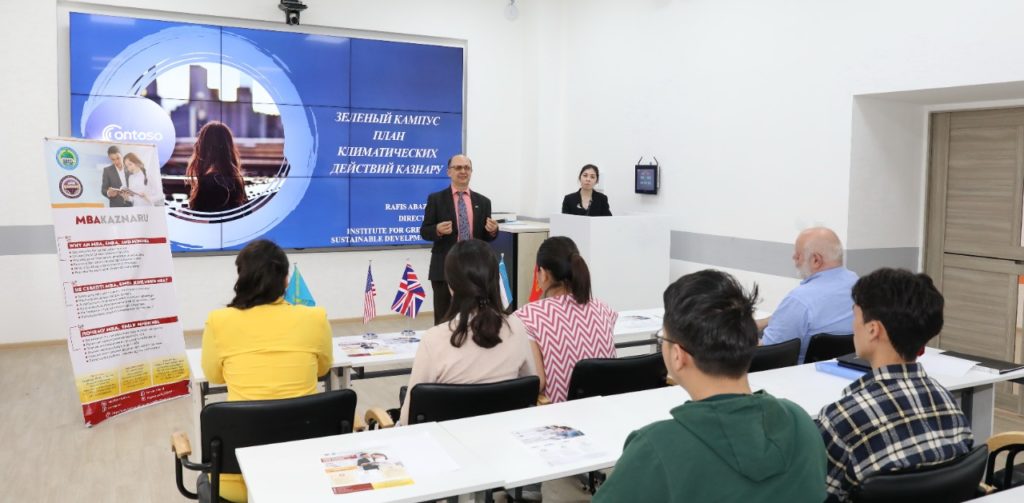
Greening Cities Through Green Campuses
Over the past few years, the themes of sustainable development and the challenges related to climate change are rapidly moving from the pages of academic journals and academic conferences to the front pages of popular newspapers, TV talk shows, and social media. Even everyday discussions of ordinary citizens often go around the topics of climate abnormalities and the impact of weather changes on everyday planning and lifestyle.
Indeed, we all have concerns about many issues that have emerged from climate change. How to react to unusual heat in our cities? How to react to the increasingly high level of air pollution in our districts? How to react to the disappearance of green parks and trees around our counties?
Of course, our politicians, government officials, city councils, and members of parliament work on addressing those problems at macro development levels, as they make important decisions, introduce laws, and regulate businesses and economic activities. Diplomats are busy crafting inter-government treaties and agreements, which are designed to improve international cooperation in dealing with pollution and climate change at state, regional and global levels.
However, there is still a place for ordinary citizens and especially for creative youth to contribute to solving global sustainability challenges at local levels. As the ancient Central Asian proverb says: “if every person will plant even one flower, the whole world will become a garden!”
For example, universities and university campuses have huge potential, especially if they are located within the cities. Universities and university campuses have huge technological potential to become central in identifying innovative technological development and technological ways to make our cities smarter. They also have the intellectual potential for social innovations and for mobilising activists at the community level on a small scale but in a smart way. Importantly, they can create, plan and implement concrete projects both inside and outside university campuses. Over the past few years, the concept of a Green Campus increasingly become popular among students and faculty members.
Take the example of Kazakh National Agrarian Research University (KazNARU) – which is located in one of the central districts of Almaty city in Kazakhstan. The entire university community – teachers, administrators, and students – have begun working together on the development of the concept of a ‘Green Campus’ by regularly brainstorming smart ideas for greening the campus and adopting smart technologies and innovations to make their campus even greener and smarter. The discussion of concepts of a Green Campus have allowed students and faculty members to analyse what should be done and to develop a systematic approach for planning and doing, even more, both today and in the future. Students and faculty members of KazNARU – like their colleagues and classmates from other universities in Kazakhstan and many other countries in Europe – have started from small projects. For example, they have increased the use of electric bicycles and scooters inside and outside of their campus. They plant and replant trees and flowers inside and outside of the campus making both the campus and city even greener. In addition, students promote recycling ideas like switching from traditional plastic bottles to the usage of recyclable and multiuser bottles. Many students are also involved in various innovative initiatives, like eco-trons, eco-startups, and eco-innovations. There is also a proposal that students’ assignments should focus on practical sustainable development solutions, instead of writing on vague topics just for getting grades. The laboratories and experimental plots of the university make their contributions by working on the selection of new plants, bushes, and trees, which are better adapted for vertical city gardening, absorbing CO2, and for climate change.
The opportunities for implementation of the Green Campus concept are limitless. Practically every Central Asian republic and many countries in Europe have hundreds of thousands of students who can make not only intellectual but also practical contributions to greening their cities by developing, designing, and implementing their very own smart green and innovative ideas for their campuses and their cities and ultimately contributing to addressing global climate change challenges.
By Rafis Abazov
Rafis Abazov, Ph.D., is a visiting professor at Kazakh National Agrarian University (KazNARU) and a director of the Institute for Green and Sustainable Development. He is the author of The Formation of Post-Soviet International Politics in Kazakhstan, Kyrgyzstan, and Uzbekistan (1999), The Culture and Customs of the Central Asian Republics (2007), The Stories of the Great Steppe (2013), and some others
